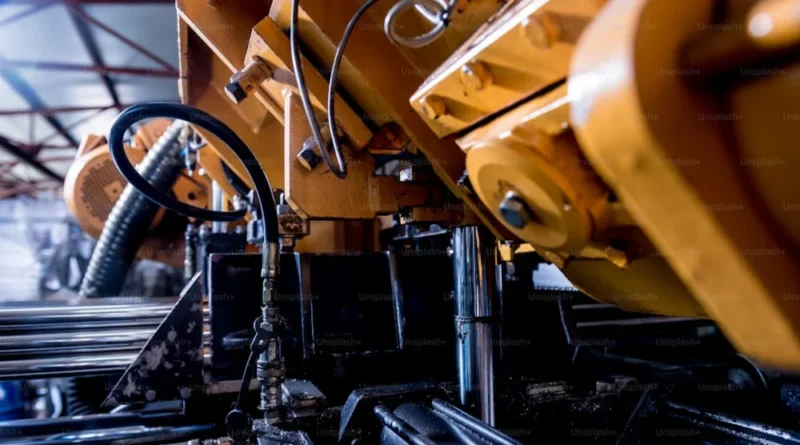The Importance of Mechanical Drafting in Complex Machinery Design
Mechanical drafting plays a pivotal role in the field of engineering, serving as the blueprint for designing and manufacturing complex machinery. As technology evolves and machinery becomes increasingly sophisticated, the necessity for precision and detailed drafting grows exponentially. The drafting process involves creating technical drawings and schematics that visually convey how components should be constructed, assembled, and function. These drawings are essential for engineers, machinists, and manufacturers, enabling them to bring intricate machinery designs to life. In this article, we will explore the importance of mechanical drafting in complex machinery design, its benefits, and how it ensures the successful development of high-performing machines.
The Role of Mechanical Drafting
Mechanical drafting involves the creation of detailed technical drawings that define the dimensions, geometry, and material specifications for machinery components. These drawings serve as a visual communication tool for engineers and manufacturers, outlining how each part of a machine will be fabricated and assembled. Mechanical drafters use computer-aided design (CAD) software to generate these drawings, ensuring precision and adherence to industry standards.
For complex machinery, mechanical drafting is indispensable. It provides a clear representation of how various parts interconnect and function together. With intricate machines, even the smallest misalignment can cause malfunctions, making precise drafting critical. These drawings provide a comprehensive guide to assembling the machinery correctly, allowing for accurate manufacturing and reducing the risk of costly errors.
Ensuring Accuracy and Precision
One of the primary reasons mechanical drafting is so important in machinery design is its ability to ensure accuracy and precision. Modern machinery often involves hundreds or even thousands of parts, each with specific dimensions and tolerances. Without clear and detailed drafting, it would be nearly impossible to ensure that every part fits together perfectly.
In the design phase, drafters work closely with engineers to translate conceptual designs into practical schematics. By incorporating detailed measurements and specifications into the drawings, mechanical drafting helps eliminate ambiguities that could lead to errors during the manufacturing process. This accuracy is especially critical in industries such as aerospace, automotive, and medical device manufacturing, where a small mistake can result in costly repairs or even dangerous malfunctions.
Mechanical drafting also allows for the simulation and testing of designs before they are built. Through CAD software, designers can simulate how parts will interact and identify potential issues. This capability saves time and resources by reducing the need for physical prototypes and testing. It also helps identify potential design flaws early, leading to more robust and reliable machinery.
Facilitating Communication Across Teams
Complex machinery design is a collaborative effort that involves multiple teams, including engineers, drafters, machinists, and manufacturers. Mechanical drafting acts as a universal language, facilitating communication between these teams. By creating detailed and standardized drawings, drafters ensure that everyone involved in the process has a clear understanding of the design requirements.
Mechanical drafts are essential for communicating the technical details needed for fabrication and assembly. For example, machinists use the drafts to determine how to manufacture specific parts, while assemblers use them to understand how components fit together. The drafts serve as a reference throughout the entire manufacturing process, from initial concept to final production.
In addition, mechanical drafts play a crucial role in maintaining quality control. Detailed drawings ensure that manufacturers adhere to the required specifications and tolerances. If a part is not produced to the correct dimensions, the draft can be used to identify the error and make adjustments. This level of control helps maintain the integrity of the final product, ensuring that the machinery functions as intended.
Improving Efficiency and Reducing Costs
Mechanical drafting not only enhances the quality of complex machinery design but also improves efficiency and reduces costs. By providing a clear and precise guide for the manufacturing process, drafting minimizes errors and rework, which can be costly and time-consuming.
With accurate drafts in place, manufacturers can streamline production processes, ensuring that parts are fabricated correctly the first time. This efficiency reduces the need for trial and error, saving both time and resources. In industries where time-to-market is critical, the ability to move from design to production quickly can provide a significant competitive advantage.
Furthermore, mechanical drafting helps reduce material waste by ensuring that parts are manufactured to the exact specifications needed. In complex machinery design, even slight deviations from the original specifications can result in the need for rework or replacement parts. By eliminating these errors, drafting contributes to more efficient use of materials and reduces overall production costs.
Supporting Innovation in Machinery Design
The field of mechanical engineering is constantly evolving, with new technologies and innovations driving the development of more complex machinery. Mechanical drafting plays a critical role in supporting this innovation by providing the tools needed to design and manufacture these machines accurately.
As machinery becomes more complex, the need for detailed and precise drafting increases. Mechanical drafters must stay up to date with the latest CAD software and drafting techniques to ensure they can meet the demands of modern machinery design. This continuous advancement in drafting capabilities allows engineers to push the boundaries of what is possible, creating machines that are more efficient, reliable, and capable of performing complex tasks.
In addition, mechanical drafting helps bridge the gap between conceptual ideas and practical implementation. By providing a visual representation of how a machine will work, drafting allows engineers to test new ideas and refine designs before committing to production. This capability is essential for driving innovation in industries such as robotics, renewable energy, and manufacturing automation.
Conclusion
Mechanical drafting is an essential component of complex machinery design, providing the precision, accuracy, and communication tools needed to bring intricate machines to life. By creating detailed technical drawings, drafters ensure that every part of a machine is manufactured to the correct specifications and fits together perfectly. Mechanical drafting not only improves the quality of machinery but also enhances efficiency, reduces costs, and supports innovation in the field of mechanical engineering. As technology continues to advance, the role of mechanical drafting will become even more critical in designing the machines of the future.
FAQs About The Importance of Mechanical Drafting in Complex Machinery Design
- What is mechanical drafting in machinery design?
It is the process of creating detailed technical drawings to guide the design, fabrication, and assembly of complex machinery. - Why is accuracy important in mechanical drafting?
Precision ensures that all machine components fit and function correctly, reducing errors during manufacturing. - How does mechanical drafting improve communication in design teams?
Drafts provide a clear, standardized reference for engineers, machinists, and manufacturers, ensuring everyone is aligned. - What role does CAD software play in mechanical drafting?
CAD software is used to create, simulate, and test designs, ensuring accuracy and efficiency before production. - How does mechanical drafting reduce costs in machinery design?
It minimizes errors, waste, and rework, leading to more efficient production and lower material and labor costs.




